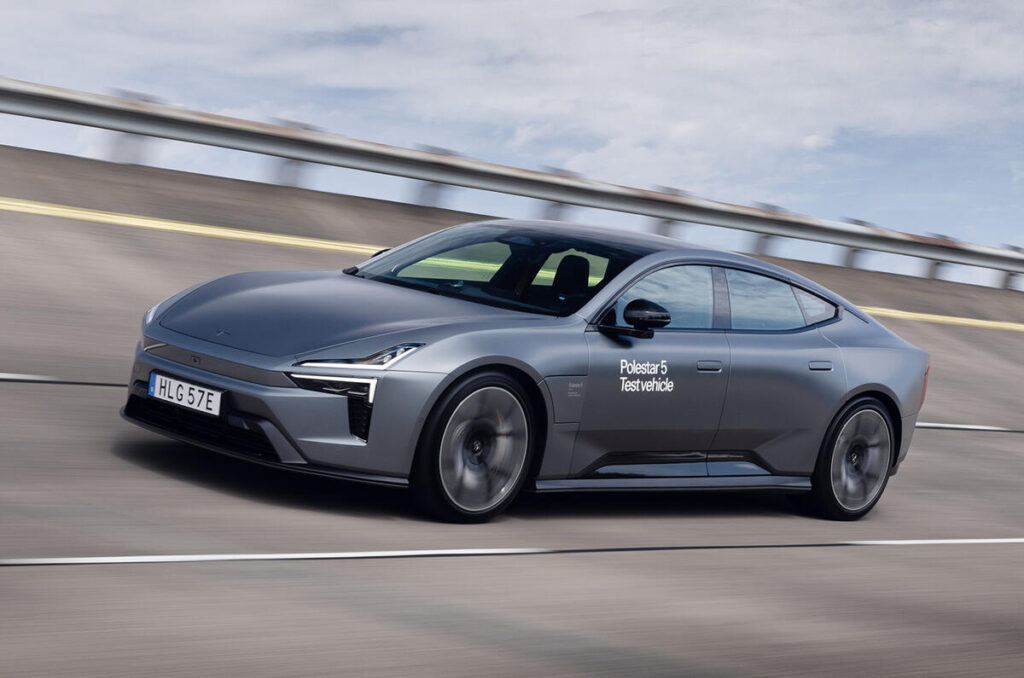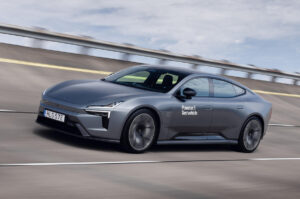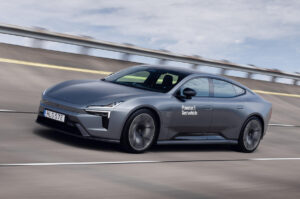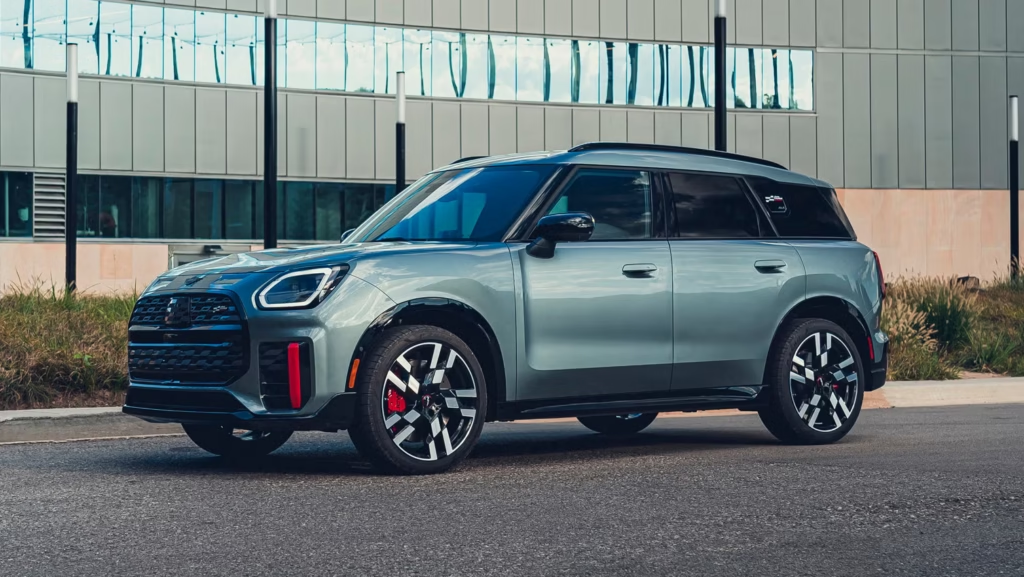






Polestar 5 : The Polestar 5 is shaping up to be one of the most exciting EV saloons on the market. Unlike previous Polestar models that were based on shared Geely platforms, this car is built from the ground up with a bonded aluminium chassis—a structure typically reserved for low-volume sports cars like the Lotus Elise. With up to 872bhp, lightweight construction, and sharp dynamics, it could be the purist’s alternative to the Porsche Taycan.
Design & Styling – A New Direction for Polestar
- Built on a clean-sheet platform: Polestar Performance Architecture.
- Features an ultra-thin battery and low seating position, giving it true saloon proportions.
- Wider stance but still narrower than a Taycan, creating a sleek road presence.
- Rear light bar doubles as a spoiler lip, a clever minimalist touch.
Pros: Stylish, dynamic construction, strong road presence
Cons: Still carries considerable weight
Interior – Minimalist Yet Distinctive
The cabin feels premium and unconventional, with fabric dashboard finishes, light tones, and sustainable materials instead of carbon fibre or dark trims. Seating is low and comfortable, offering ample adjustment.
- Boot space: 365 litres (1,128 litres with seats folded) + 62-litre frunk.
- No rear windscreen, which limits rear visibility but allows full use of boot space.
- Infotainment system is still heavily screen-based, which may affect usability.
Pros: Premium, airy cabin; unique material choices
Cons: Over-reliance on screens; high floor for rear passengers
Performance – Serious Power and Speed
The Performance variant produces 871bhp and 749lb ft, sprinting 0–60mph in 2.9 seconds. A Dual Motor version with 737bhp will also be available.
- Front motor sourced from ZF, rear developed in-house by Polestar.
- Disconnect clutch allows FWD cruising for efficiency.
- Multiple regenerative braking modes, including one-pedal driving.
Pros: Extremely fast, sharp acceleration, flexible driving modes
Cons: Excessive power may feel unnecessary for some
Ride & Handling – Focused on Driving Purity
Unlike rivals, the Polestar 5 avoids excessive chassis technology:
- No air suspension, rear-wheel steering, or torque-splitting systems.
- Instead, it relies on magnetorheological adaptive dampers and a precise chassis layout.
- Steering is linear and communicative, offering natural feedback.
- Maintains a good balance in corners with stable high-speed performance.
Pros: Direct steering, engaging balance, supple suspension
Cons: ESC cannot be fully switched off; Comfort mode could be softer
Range & Charging – Strong but Not Class-Leading
- Battery: 106kWh
- Range: 416 miles (Dual Motor), 351 miles (Performance)
- Efficiency: 3.4 mpkWh (Dual Motor), 3.0 mpkWh (Performance)
- Charging: 350kW DC fast charging, 10–80% in ~22 minutes
Pros: Faster charging than many rivals, strong range figures
Cons: Efficiency not benchmark-setting, Performance model less practical
Pricing & Value
- Dual Motor Launch Edition: From £89,500
- Performance Launch Edition: From £104,900
Both undercut Porsche Taycan equivalents, making the Polestar 5 an attractive value proposition in the premium EV saloon market.
Verdict – A True Driver’s EV Saloon
The Polestar 5 stands out with its unique aluminium construction, sharp handling, and Scandinavian design. While its infotainment system and Performance range may be weak points, it feels more natural and engaging to drive compared to rivals like the Taycan or Lotus Emeya.
For those seeking a non-SUV electric performance car with style and substance, the Polestar 5 could be a game-changer.

